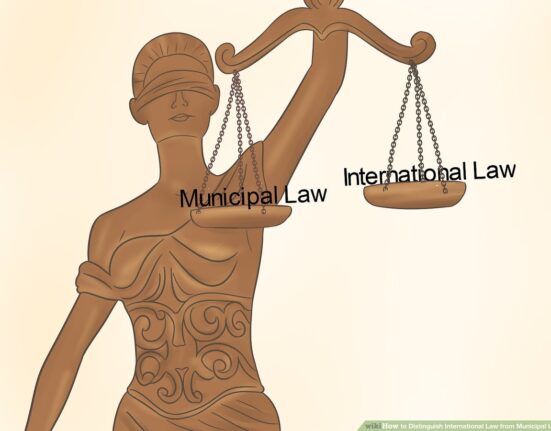Sources of International Law: By Tsewang Dema, Student, LPU.
Introduction
They can be divided into 2 categories; i.e.,
- Primary Sources
- Secondary Sources
A. Primary Sources of International Law
As per Article 38(1) of the Statute of the ICJ, there are 5 sources of International Law, i.e.
- International Conventions;
- International Customs
- General Principles of Law recognized by civilized nations;
- Judicial Decisions; and
- Teachings of most highly qualified publicists of various countries (Juristic Works).
- Decisions or Determinations of the organs of International Institutions or International Organizations. (This source is not listed in Article 38 of the Statute of the ICJ. It was developed later on. It has been accepted as a source of International Law in the modern era.)
1. International Conventions
International conventions are treaties signed between two or more nations that act as an international agreement. This is the most important source of International Law. States create binding rules for them.
The convention includes a Treaty, Protocol, and Agreement, regardless of its title or form.
George Schwarzenberger opines that “Treaties are agreements between subjects of International Law which create a binding obligation.”
A Treaty can be signed only between two or more countries. On the other hand, a Pact can be signed between two individuals as well.
Types of International Treaties
They are of 2 types, i.e.,
1. Law-making Treaties
(i) Treaties that lay down rules of Universal International Law. ex: UDHR, UN Charter.
(ii) Treaties that lay down general principles of International Law. ex: Vienna Convention on Law of Treaties, 1969, UNCLOS, 1982.
2. Treaty Contracts (Entered into between 2 or more States; binding only on the signatories).
2. International Customs
This is the Oldest and the original source of International Law. The words Custom and Usage are often erroneously used synonymously. Usage means those habits which are repeated by States. And Usage is the early stage of customs as well as unlike custom it does not have the force of law. It/Usage often fructifies into Custom, which has the force of law.
Ingredients of International Custom
- Antiquity
- Continuity
- Consistency
- Accepted as Law
- Certainty
- Uniformity
- Not in conflict with Municipal Law
Jus Cogens as sources of international law
Some customary international laws rise to the level of jus cogens through acceptance by the international community as non-derogable norms or rules.
States are bound by the norms of jus cogens regardless of whether or not they have codified these laws domestically or through treaties.
Jus Cogens includes the prohibition of genocide, piracy at sea, slavery as well as slave trade, torture and wars of aggression.
In West Rand Central Gold Mining Ltd. Co. Vs King (1905) 2 KBD 291, The KBD of the UK High Court held that for establishing a valid international custom, it is necessary to prove by satisfactory evidence that the Custom has received general consent of the States as well as that it is not opposed by any civilized State.
In Portugal vs India, The ICJ held that if any practice has been followed by 2 States amongst themselves for a long time, it becomes a binding customary rule between them.
In the Scotia Case, The US Supreme Court held that some customs need not be ancient to become a part of International Law. If a custom is accepted and followed even by a few nations for a few years, it may become a part of International Law.
3. General Principles of Law Recognized by Civilized Nations
This source helps International Law to adapt itself to the changing times and circumstances. It can be interpreted in 2 ways, i.e.,
- General Principles of other laws which can be applied to international legal questions. For-ex: Principles of Natural Justice, Res Judicata, Estoppel, etc.
- Natural law, as interpreted in the modern era.
In The United States vs Schooner Amistad (1841) 40 US 518, The US Supreme Court ruled against the international slave trade and held that international law should be based on general principles of law recognized by civilized nations.
4. International Judicial Decisions as a source of international law
Decisions of International Courts and Tribunals are also an important source of International Law. For ex:
- PCIJ
- ICJ
- ICC
- ITLOS
ICJ is not bound by its own decisions and as per Art. 59 of ICJ Statute, its decisions are binding only on the parties to the dispute. The advisory opinion of ICJ is also not binding.
State Judicial Decisions
State Judicial Decisions may become rules of International Law in 2 ways:
- When they become renowned precedents.
For-ex: In the case of United States vs The Ambrose Light, [(1885) US 25 F. 408], it was held that “an armed ship at sea should be sailing under the flag of a State, otherwise, it would be treated as a pirate ship.”
2. When they are recognized and accepted as Customary International Law.
5. Juristic Works as Sources of International Law
Views of renowned jurists also contribute towards the development of International Law.
In Paquete Habana Case [(1900) 175 US 677], In this case, Justice Horace Gray of the US Supreme Court observed that “where there is no treaty or judicial decision, resort must be had to the works of jurists and commentators who by years of labour and research have made themselves well acquainted with International Law.”
6. Decisions or Determinations of the Organs of International Institutions
This source is not listed in Article 38 of the Statute of the ICJ. At that time, International Institutions and international organizations had not assumed vital importance. It was developed later on. It has been accepted as a source of International Law in the modern era. After the estd. of UN, most of the development of International Law has taken place through I.O.’s and I.I.’s. For ex: FAO, WHO, ILO, ILC, ICAO, etc.
Ex Aequo Et Bono
Art 38(2) of the Statute of ICJ provides that “Art 38(1) shall not prejudice the powers of the Court to decide a case ‘ex aequo et bono’ (just and fair according to equity and good conscience) if the parties agree thereto.”
It allows the Court to go beyond the law for doing justice in a case.
In Burkina Faso vs. Mali (Frontier Dispute Case) (ICJ, 1985), The ICJ held that an International Court can decide a dispute ‘ex aequo et bono’ (according to equity and good conscience) and go beyond the law only if such power has been conferred on it by mutual agreement between the parties to the case.
B. Secondary Sources of International Law
- International Comity (Reciprocity)
- State Papers
- The advice of Law Officers
- Reason
- Equity and Justice
1. International Comity
The Mutual relations of States are based upon comity (reciprocity). When a State treats others in a particular way, the other States also generally treat it in that manner.
These practices also help in the development of International Law. For ex: extradition of fugitives on the basis of reciprocity.
2. State Papers as secondary Sources of International Law
The States have diplomatic relations with each other. They exchange letters, which are sometimes published. For ex: Demarche, Note Verbale, etc.
These letters reveal that certain principles are continuously followed by States in their mutual intercourse.
These principles also help in the development of International Law.
3. Advice from Law Officers
Many international matters are resolved on the advice of Law Officers of the Government. Sometimes, such advice is also treated as a source of International Law.
4. Reason
When there is no treaty or rule of international law to resolve a dispute, the Court applies judicial reason.
5. Equity and Justice
Equity implies fairness and reasonableness. As a branch of law, it developed side by side of the common law of England.
In the North Sea Continental Shelf Case (ICJ Reports, 1969), the ICJ observed that “whatever may be the legal reasoning of a court of justice, its decisions must always be just and equitable.”
Hierarchy of Primary Sources
In Nicaragua vs USA (ICJ, 1986), the ICJ held that “the sources of International Law (primary sources) are not hierarchical, but complementary, supplementary and interrelated.”
Also Read: Basis of International Law
![]()







Leave feedback about this